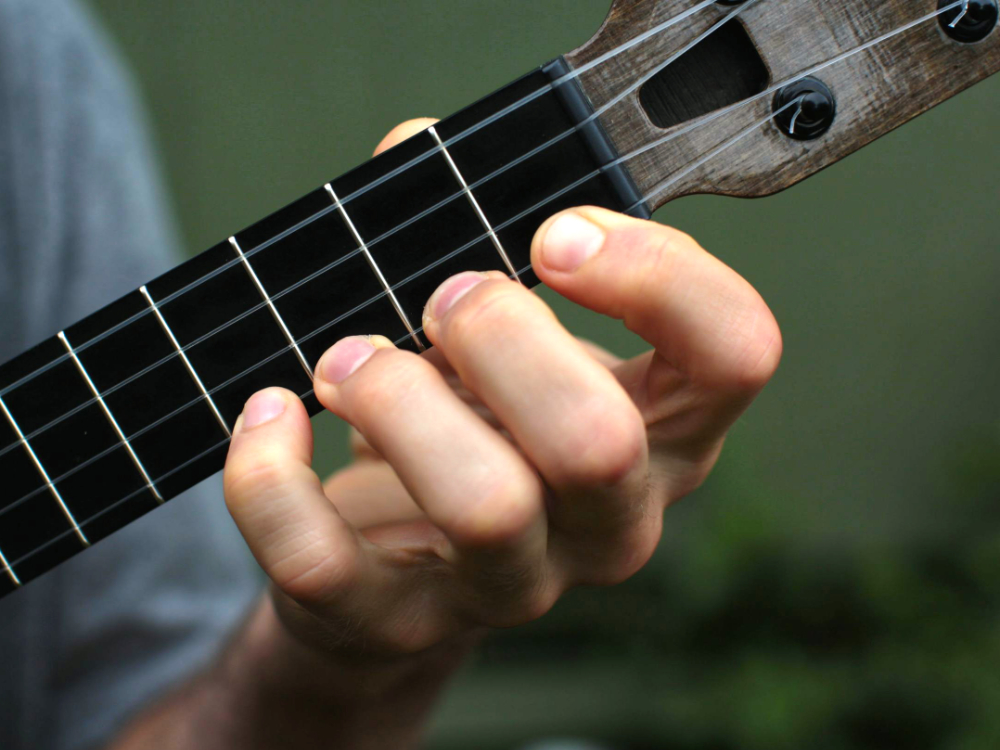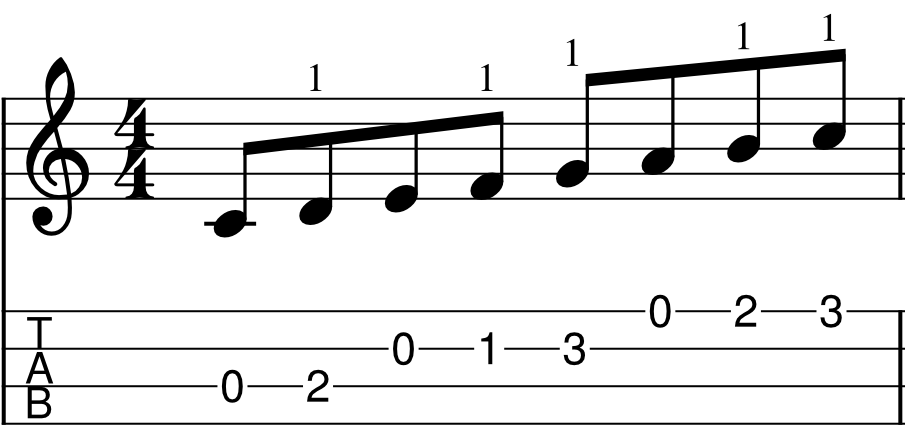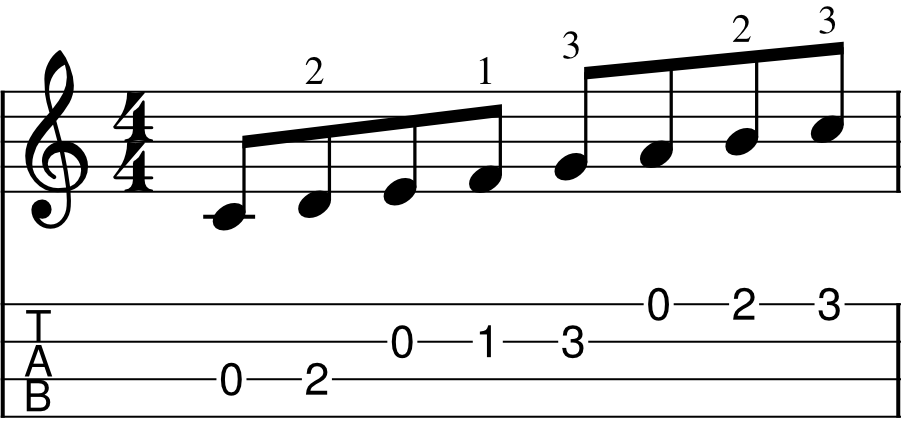Today is a guest post from Brad of Live ‘Ukulele and is a modified excerpt from his new ebook, Left Hand Technique For ‘Ukulele. If you enjoy the post, I highly recommend checking it out. It’s packed with useful tips.
When you’re jamming on your ‘ukulele, there are certain conventions you can follow to make playing easier on your left hand. The most universal of these is probably the 1234 rule.
Following this guideline (though all rules are meant to be broken) helps keep your fingers lined up efficiently and out of each other’s way.
This is useful when playing chords, but is often more overlooked during single-note melody playing. So we’ll hone in on that side of things in this lesson.
1234: a First Look
The rule is simple:
If you are playing inside the first four frets, you can often use corresponding fingers to play each fret:
- 1st finger on 1st fret
- 2nd finger on 2nd fret
- 3rd finger on 3rd fret
- 4th finger on 4th fret
A great way to practice this fingering convention is with a (cleverly-named) 1234 exercise. It’s as simple as it sounds.
On the G-string, play the 1st fret with your first finger. Then play the 2nd fret with your second finger. Then play the 3rd fret with your third finger. Lastly, play the 4th fret with your fourth finger.
Once 1234 is complete on one string, do it again on each of the next three strings so that you end on the 4th fret, A-string.
Practice slowly until you can play it perfectly. (There’s no point, in my opinion, in muddling your way through this at a faster tempo. You want to teach your fingers exactly where home is so that when it’s time to think about other things, your fingers can slip into autopilot mode.)
Here’s the whole thing in TAB:
Play the pattern in reverse once it’s easy to do normally. (Don’t rush; make it perfect!)
The 1234 Mindset – Why It Works
Oftentimes I teach students an open position C major scale and they play it using only one finger, like this (note the fingering numbers above the notation):
I understand why this happens: it’s easier!
At least at first, eliminating all other muscle movements allows them to focus completely on pressing the right frets.
This is usually fine at first as they get the pattern under their fingers. But, while it’s an initial struggle, adding additional fingers for each fret allows you to play much more efficiently down the road.
Here’s what the same scale looks like played following a 1234 convention (all that changes is the fingering):
Try playing it both ways and notice how your whole hand moves to facilitate each. In the first example using a single finger, your hand moves as if you’re playing through three different positions!
This extra movement will really slow you down when playing at a quick tempo. The goal of playing ‘ukulele should be to make it EASY! This means making zero unnecessary movements.
Many times we get caught up in just getting the job done, but taking a moment to assess your technique as you go will pay off many times over as you improve.
Using the Rule
To implement the 1234 fingering convention in your own musical piece, you just have to force yourself to do it. Take any single-note melody that lives within the first four fretsof your ‘ukulele and play it with the rule – no exceptions.
You might find that after spending some time with it, some notes would benefit from breaking out of the 1234 fingering. That’s fine in certain situations, but I think you’ll find that more often than not that the 1234 convention will treat you right.
Because we can, let’s look at how this works with the famous melody of Santana’s “Europa.”
It’s simple, but the kind of thing a lot of people would jump into incorrectly without knowing better.
One person might finger it like this (again, fingerings above the notation):
Others might do it like this:
In both cases, you’re getting hosed on the last note. You have to shift your whole hand down to play the first fret – wasted movement.
This is what it would look like in a perfect world:
By following the 1234 rule, the last note is given its respective space in the future of the phrase and your fingers can do all the work instead of needing to move your hand.
Fingering is all about looking ahead and knowing where you’re going to end up. For instance, if the last note was on the 5th fret, you would could start with your first finger on the 2nd fret and it would line you up to reach that note (2345).
So next time you catch yourself stuck in the first four frets by a poorly executed fingering order, apply the 1234 convention and start fresh.
Learn tons more about left hand fretting technique (and how to expand upon the 1234 rule) in my detailed guide, Left Hand Technique For ‘Ukulele.










